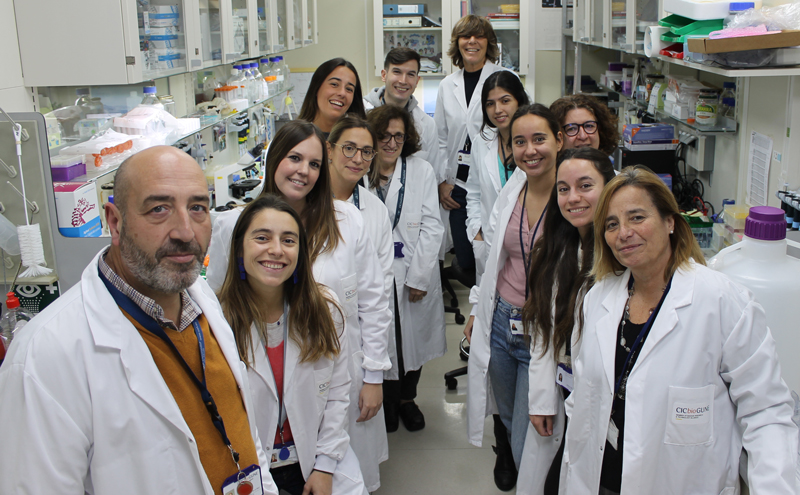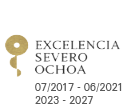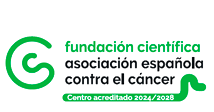
2022/11/25
New therapeutic approach to treat paracetamol-induced fulminant liver damage
Researchers from CIC bioGUNE, CIBEREHD and New York University discover that altered magnesium levels in the liver may be a cause of liver failure due to high-dose paracetamol ingestion.
Use of RNA interference technology opens new therapeutic windows to combat fulminant liver damage from paracetamol overdose.
The work has been published in the journal Nature Communications.
Current treatment with the antioxidant N-acetylcysteine is only effective if administered within eight hours of ingestion.
Researchers from CIC bioGUNE, the Center for Biomedical Research Network for Liver and Digestive Diseases (CIBEREHD) and New York University have discovered a new therapeutic strategy to treat patients with fulminant liver failure due to paracetamol overdose. Current therapy is only effective if administered within the first eight hours after paracetamol overdose. The research, published in the journal Nature Communications, identifies dysregulation of magnesium levels in the liver and increased levels of the protein CNNM4 (responsible for the transport of this metal ion across cell membranes) as markers of liver damage.
The development of an RNA interference-based therapy linked to the regulation of magnesium levels could significantly extend the window of time to treat these patients up to 24 hours after toxic paracetamol intake, and could potentially avoid the need for liver transplantation.
Drug-induced liver damage is one of the main causes of acute liver failure and transplantation in the Western world. Paracetamol, also known as acetaminophen, is an over-the-counter drug commonly prescribed worldwide to treat pain and fever. Though a safe painkiller when administered in appropriate doses, high doses are toxic, and it has become the most common cause of fulminant liver failure in the UK and the US (57%). In Europe, it accounts for 46% of diagnosed cases of liver failure, and in the US, it is estimated that over 60 million people use paracetamol every week. About 30,000 patients are taken into intensive care each year with liver damage due to high doses of paracetamol.
Treatment with the antioxidant N-acetylcysteine (NAC) is standard after hospital admission and is recommended as an antidote, even before the diagnosis has been made. However, its effectiveness is limited to the first hours after toxic ingestion of paracetamol, after which liver transplantation is the only option if the patient’s condition does not progress satisfactorily. There is, therefore, a need to clearly define new therapies that are efficient in advanced stages of the disease.
“We have identified that patients with liver damage attributable to paracetamol overdose have altered magnesium levels in serum and liver, due to a significant increase in the protein CNNM4. This protein enables the transport of magnesium ions across cell membranes in the liver, and only increases in abundance in pathological stages”, explain Dr. Malu Martínez Chantar and Dr Alfonso Martinez de la Cruz, researchers in the Liver Disease Laboratory at CIC bioGUNE. The research has shown that modulation of the expression levels of this protein, using subcutaneous administration of a therapeutic RNA targeted directly at the liver, restores mitochondrial activity and prevents liver necrosis, whilst also promoting liver regeneration in advanced preclinical models of liver damage due to paracetamol overdose.
The study, the first author of which is Dr. Irene González Recio, has been published in the prestigious journal Nature Communications, and was co-directed by Drs. Malu Martínez Chantar and Alfonso Martinez de la Cruz at CIC bioGUNE. The research was conducted in close collaboration with a multidisciplinary consortium that includes national and international researchers from hospitals and basic and translational research centres belonging to the Biomedical Research Network for Liver and Digestive Diseases (CIBEREHD).
About CIC bioGUNE
The Center for Cooperative Research in Biosciences (CIC bioGUNE), member of the Basque Research and Technology Alliance (BRTA) and located in the Bizkaia Technology Park, is a biomedical research organization conducting cutting-edge research at the interface between structural, molecular and cell biology, with a particular focus on the study of the molecular bases of disease, for use in the development of new diagnostic methods and advanced therapies.
About the CIBER
CIBER (the Consortium of Biomedical Network Research Centres) is part of the Instituto de Salud Carlos III/ Carlos III Health Institute of the Ministry for Science, Innovation and Universities, and is co-funded by the European Regional Development Fund (ERDF).
About the BRTA
The BRTA is an alliance made up of 4 collaborative research centers (CIC bioGUNE, CIC nanoGUNE, CIC biomaGUNE and CIC energiGUNE) and 12 technology centers (Azterlan, Azti, Ceit, Cidetec, Gaiker, Ideko, Ikerlan, Lortek, Neiker, Tecnalia, Tekniker and Vicometch), with the aim of developing advanced technological solutions for Basque companies.
With the support of the Basque Government, the SPRI Group and the Provincial Councils of the three regional provinces, the alliance seeks to promote collaboration among its centers, to strengthen the conditions to generate and transfer knowledge to companies, contributing to their competitiveness, and to spread Basque scientific and technological capacity outside of the Basque Country.
The BRTA has a staff of 3,500 professionals, accounts for 22% of the Basque Country’s R&D investment, generates an annual turnover of over EUR 300 million and files 100 European and international patents per year.
CIC bioGUNE, member of the Basque Research & Technology Alliance, BRTA
See a large version of the first picture





